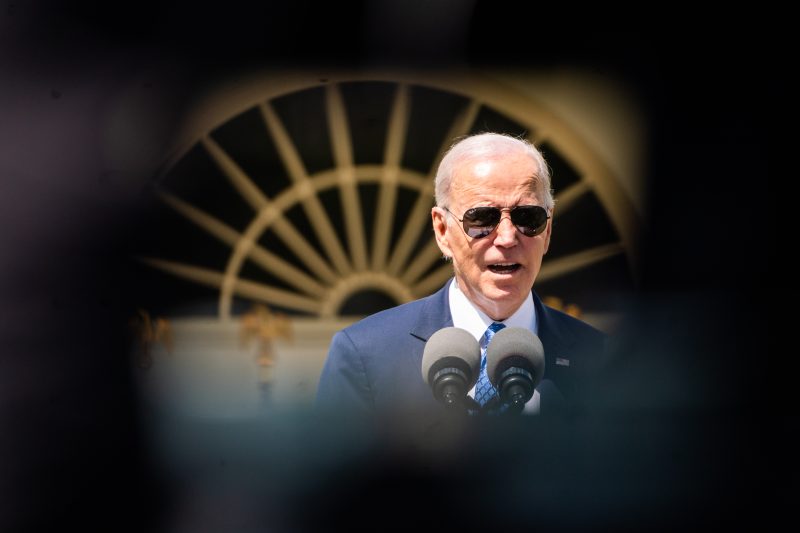When Donald Trump announced his bid for reelection in June 2019, he was doing so from a point of unusual weakness. His approval rating was at a tepid 42.5 percent, according to FiveThirtyEight’s historic approval polling averages — a remarkably low figure in general, much less for someone seeking reelection. Sure enough, his bid to retain the presidency failed, with Trump losing the popular-vote margin in 2020 by 4.5 percentage points.
The winner of that contest was President Biden, who on Tuesday announced his reelection bid.
His approval rating, according to FiveThirtyEight’s average? Precisely 42.5 percent.
It is obviously true that Biden has a lot of time to see his approval rating improve. If we consider where approval sat for prior presidents seeking reelection at this same point relative to the general election, we see no correlation: George H.W. Bush was very popular and lost reelection; Ronald Reagan was about as popular as Biden is now and went on to completely crush Walter Mondale in 1984.
By the time Election Day rolls around, though, approval ratings correlate strongly to actual vote margins. Those dark purple dots run from lower-left to upper-right: Worse approval ratings correlate to worse popular-vote margins by Election Day.
(Since Lyndon B. Johnson took office fewer than 560 days prior to the 1964 election, only his final approval is shown.)
You can also see how much approval ratings changed. The arrows show the shifts in approval for each president from the 560-day mark until Election Day. George H.W. Bush lost because his approval rating, buoyed by the 1991 Gulf War, plunged as the economy soured. That change (and third-party candidate Ross Perot) cost him his reelection.
You can see that plunge distinctly below. Each graph at left shows the change in a president’s approval over the final 600 days before a general election. The thinner graph shows the final popular-vote margin (which, of course, doesn’t always equate to election as president).
The challenge for Biden is the same challenge Trump faced: Approval ratings simply don’t move as much as they used to. Since the second year of Barack Obama’s time in office, approval ratings have been sharply and consistently polarized on partisan lines. A president’s party views him positively and the opposing party views him negatively. Most movement comes down to how independents feel.
If the trend in correlation between approval ratings and final vote margins since Truman held fast, a 42.5-percent approval rating for Biden on Election Day 2024 would be expected to result in a half-point loss in the popular vote — almost certainly meaning a loss of the electoral college.
The math doesn’t work that way, of course. You can’t simply plug an approval rating into a box and see the eventual popular-vote margin pop out. Particularly because Biden’s reelection bid may well end up as a rematch against Trump.
This is another recent pattern in presidential politics: General election battles involve deeply unpopular candidates. In 2016, both Trump and Hillary Clinton were viewed unfavorably; Trump’s victory can be credited to his receiving more support from those who disliked both him and his opponent. In 2020, Trump was still very unpopular while Biden was viewed more positively. That has eroded in the years since.
Recent polling, though, shows that those who dislike both Trump and Biden tend to prefer the incumbent president. A poll from the Wall Street Journal determined that among those who view both Trump and Biden negatively, more than half say they would vote for Biden in a 2024 rematch.
This appears to be the bet Biden is making, if his campaign announcement video is any indicator. He’s framing the election, once again, as a battle for the future of American democracy. If Trump is his opponent, that message is more robust and immediate, but he’s poised to frame it similarly whoever he ends up running against. (There’s no real question that, barring some exceptional incident, Biden will be the Democratic nominee.)
It’s a message that comes down to asking Americans to choose between a president they don’t like very much and a party that Biden positions (with receipts) as a threat to democracy itself.
It’s like the old joke about the friends trying to escape a bear. As one puts on sneakers, the other asks why he’s bothering; he can’t outrun the bear. His friend explains: He doesn’t need to outrun the bear — he just needs to outrun his friend.
Biden doesn’t need to be the most popular candidate. He just needs to be more popular than the alternative.

